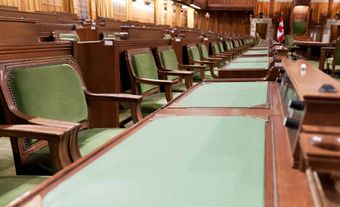The Speech from the Throne declares a government’s agenda for a new session of the legislature. The speech contains comments on the state of the country or province and outlines the matters on which the government will seek action. The monarch or their representative — the governor general federally and the lieutenant-governor provincially — delivers the speech; but it is entirely the work of the Cabinet ministers.

Address in Reply to the Speech from the Throne
The first order of business of the House of Commons and the Senate in a new session of Parliament is to authorize a response to the speech. This is the “Address in Reply to the Speech from the Throne.” A government backbencher moves for a thankful Address; opposition MPs then move amendments lamenting the content of the speech and usually declaring their nonconfidence in the government. In the House of Commons, the debate on the Address is limited to eight days. A Member of Parliament can speak on almost any subject. To demonstrate that the House can undertake business other than what has been proposed in the speech, the first bill introduced in a session always deals with a matter not mentioned in the speech.
See also Parliamentary Procedure; Constitutional Monarchy; Constitution of Canada; Constitutional History of Canada.

 Share on Facebook
Share on Facebook Share on X
Share on X Share by Email
Share by Email Share on Google Classroom
Share on Google Classroom


.jpg)